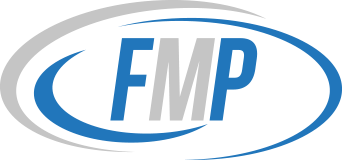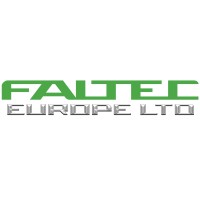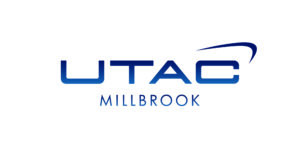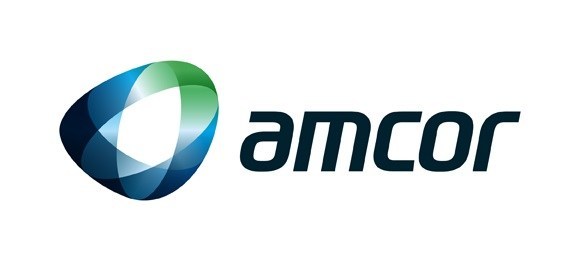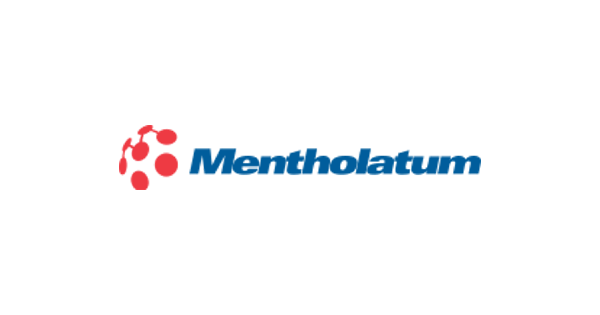Why collaboration is now central to QMS systems
For a long time, document control was seen as a low-value-added, static exercise. Create an SOP, lock it down and file it away in the system. But modern Quality Management Systems are helping companies enforce a different and better approach.
Documents are rarely static and unchanging. They’re living artefacts that need input from Quality, Operations, Compliance, R&D and often multiple stakeholders all at once.
In manual environments, users have few options for document collaboration beyond emailing a “work in progress” file around. That quickly becomes inefficient and often ends with people in a meeting room trying to reconcile changes (I’m sure many readers can relate to this!).
The same is true of approvals; many approval processes rely on email chains, or in some cases, passing documents around in a folder. The result is that collaboration either doesn’t happen or it happens in ways that can’t be properly tracked.
But what do we mean by “Document Collaboration”?
When people hear the term document collaboration, they often think of co-authoring tools such as Word or Google Docs. That is part of it, but in the context of a quality management system, collaboration goes much further.
A Document Management System (DMS software) can help with storage, file structures and some shared editing. However, without embedded revision control, audit trails and approvals, it is essentially structured file sharing. A document control system or collaborative QMS system builds those controls in, so collaboration doesn’t undermine compliance.
Many organisations mistake collaboration for simply emailing Word documents back and forth. This offers no way to track contributions or to compare “before and after” versions. Tools like Google Docs or OneDrive help with live editing, but the end-to-end process is still usually managed manually and separately.
Effective collaborative document control looks very different. It takes place in a controlled, systemic environment where access, notifications, revision control, approvals and the audit trail are all handled automatically.
Editing or commenting on a document may feel similar to other tools, but the surrounding context and system make it audit-ready and reliable.
Why document collaboration matters in a QMS context
Collaboration in a QMS is not just about speed. It also creates traceability and accountability.
Real-time SOP reviews reduce bottlenecks and in regulated sectors, the record of who contributed what can be as important as the final document itself. Multi-user input improves the quality of procedures and training materials and links directly into CAPA (Corrective Action / Preventive Action), audits and change management.
Most organisations historically have not focused on true “document collaboration” because technical barriers meant they rarely practised it. Digitised processes and modern systems like Singlepoint thankfully change that!
Electronic approval workflows with evidence, traceability and audit trails transform how teams prepare for audits and auditors immediately recognise the difference.
While there is a risk of “too many cooks” in any collaborative environment, systems like Singlepoint keep participation controlled and invitation-only, ensuring the right people are involved without slowing progress.
Core features of collaborative Document Control in a modern QMS
- Version control in a QMS should provide side-by-side comparisons, automated updates and rollback functionality so that everyone is always working from the right version.
- Approval workflows will be enforced by the system, which means documents move through the right steps without the need to chase people by email and every stage is logged automatically.
- Real-time commenting and co-authoring allow contributors to add their input directly in the system, with full accountability for what has been changed and by whom.
- Role-based collaboration ensures quality, technical and regulatory teams can all contribute while staying within the permissions that have been set for them.
Customers often highlight these features in Singlepoint, but more than anything, they value the Singlepoint environment itself.
Controlled access, automated notifications and audit trails all happen in the background without extra admin. Many return to the idea of having “a single source of truth,” which becomes a reality once the system is in place.
Singlepoint’s New Product Introduction module is a strong example of this in action. It acts as a collaborative workspace where everyone can carry out their work while maintaining a clear and accurate picture of project status.
How collaboration works inside a QMS workflow
Organisations moving from email-based review to QMS based document collaboration often describe the biggest shift as visibility.
The Engineering change management process illustrates this transformation. Historically, this process required chasing input from purchasing, manufacturing, planning, sales, logistics and others, which made it slow and error-prone.
With Singlepoint QMS, the process is fully electronic and automated, capturing all required input, enforcing review points and providing a full audit trail. Auditors consistently respond positively to this approach, recognising collaborative approval workflows as a hallmark of a well-run QMS.
Collaboration also adds value in many other scenarios:
SOP and Policy Reviews
- Drafts are shared across teams for structured review, with feedback captured directly in the system so nothing is lost in email chains.
- Approval workflows are enforced before any SOP or policy can go live, which means every stakeholder has signed off before the document is published.
- A complete audit trail of comments, edits and sign-offs is captured automatically, giving teams the confidence that reviews are properly documented.
Change Control Processes
- Controlled documents are tied directly to engineering or process change requests, so there is no risk of outdated versions being used.
- Notifications and task assignments keep reviewers aligned and ensure actions are taken on time.
- The current version of a document is always linked to the latest approved change, preserving accuracy and traceability throughout the process.
CAPA and Audit Readiness
- Evidence, actions and supporting documents are stored together in one workflow, which makes investigations and follow-up easier to manage.
- Multiple departments can contribute without creating version confusion, since the system ensures only the controlled version is in circulation.
- Organisations are better prepared for audits, with complete, traceable documentation that can be demonstrated to auditors on demand.
When collaboration isn’t built into the system, organisations end up paying what we often call the “tax of poor collaboration”. Outdated SOPs circulate in email threads, creating compliance risks. Reviews are duplicated and comments have to be reconciled manually, slowing everything down.
On top of that, coordination issues emerge when no one is sure which version is correct or who actually owns the document. These hidden costs might not be obvious day to day, but they tend to surface at the worst possible moment, i.e. during audits, product launches or when a regulator asks for evidence.
The business case is efficiency, compliance and culture
In regulated industries, collaboration is also about preserving institutional knowledge. A modern QMS captures not only the final version of a document but also the rationale, discussions and approvals behind it. This creates resilience when staff change roles or leave, because the knowledge stays within the system rather than walking out the door.
Collaboration also delivers operational benefits. It reduces duplication, keeps teams aligned across sites and builds a culture of transparency and accountability. The impact on compliance readiness and continuous improvement is direct and measurable.
The value of collaboration can look different depending on the process. With SOP collaboration, the benefit is often higher-quality documents rather than time saved. In FMEA, it is the quality of the outcome as well as traceability. In NPI and Engineering Change, control itself is the biggest gain. Once a shared workspace exists, downstream efficiencies follow: mistakes are caught earlier, omissions are avoided and the effect on quality and timelines is significant.
Choosing the right collaborative QMS
When selecting a collaborative QMS, the aim is to find a platform that balances compliance strength with ease of use. A system that is too rigid will frustrate users, but one that is too loose will fail to meet regulatory needs.
What to look out for
- The system should scale easily across sites and teams without becoming fragmented.
- It should integrate with existing tools such as ERP and LMS so collaboration happens in the flow of work.
- The balance of usability and governance is critical. If it is too clunky, adoption will stall; if it is too open, compliance will be compromised.
- Regulatory support should be built in, including 21 CFR Part 11 and ISO requirements for traceability of edits and approvals.
When systems don’t meet the mark
- Some tools allow co-authoring but provide no formal approval and audit trail, which might work in general office use but is unacceptable in a QMS.
- Others rely on manual or email-based approval chains, creating delays and traceability gaps.
- Poor search or navigation can drive users back to offline copies, undermining the whole point of centralising documents.
Questions to ask vendors
- Is it easy to use? If the steps required for collaboration are complicated or time-consuming, people simply won’t use them.
- Is it secure? Will the right people (and only the right people) be included in the process at the right time?
- Is it compliant? In QMS and product development contexts, full traceability, security and audit trails are non-negotiable.
- Is it all within one system? If users have to move between multiple platforms, adoption will drop.
- Will it deliver tangible benefits? People already understand that collaboration is valuable. The real test is whether the system makes it easier and more controlled, or whether it gets in the way.
For a deeper look at how collaborative document control fits into the bigger picture, see our guide What Is a Document Control and Management System?
What’s next for collaboration within your QMS?
Collaboration inside QMS platforms will only become more deeply embedded. AI is likely to play a bigger role, perhaps even acting as a major reference point in collaborative or approval contexts. That may feel unsettling, but assuming humans remain central, collaboration will increasingly be the norm rather than the exception.
Teams will expect to share the task of creating and managing documents because the technology will make it easy. Mobile devices will continue to support collaboration on the move and systems will evolve to bring people together quickly, capture input efficiently and ensure that documents are created, verified and improved collectively.
At the end of the day, two brains are better than one and five are better than two, provided the collaboration process itself doesn’t become a bottleneck. The direction of travel is clear: QMS platforms will continue to move towards environments that make it simple, secure and compliant for teams to work together.
Ready to see what collaborative document control looks like in practice?
Book a demo of Singlepoint and discover how our platform enables real-time document reviews, controlled approvals and enforces a single source of truth without the bottlenecks of email and manual processes.
